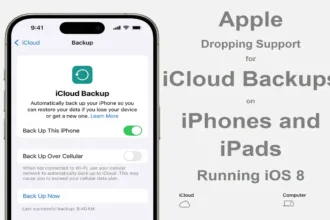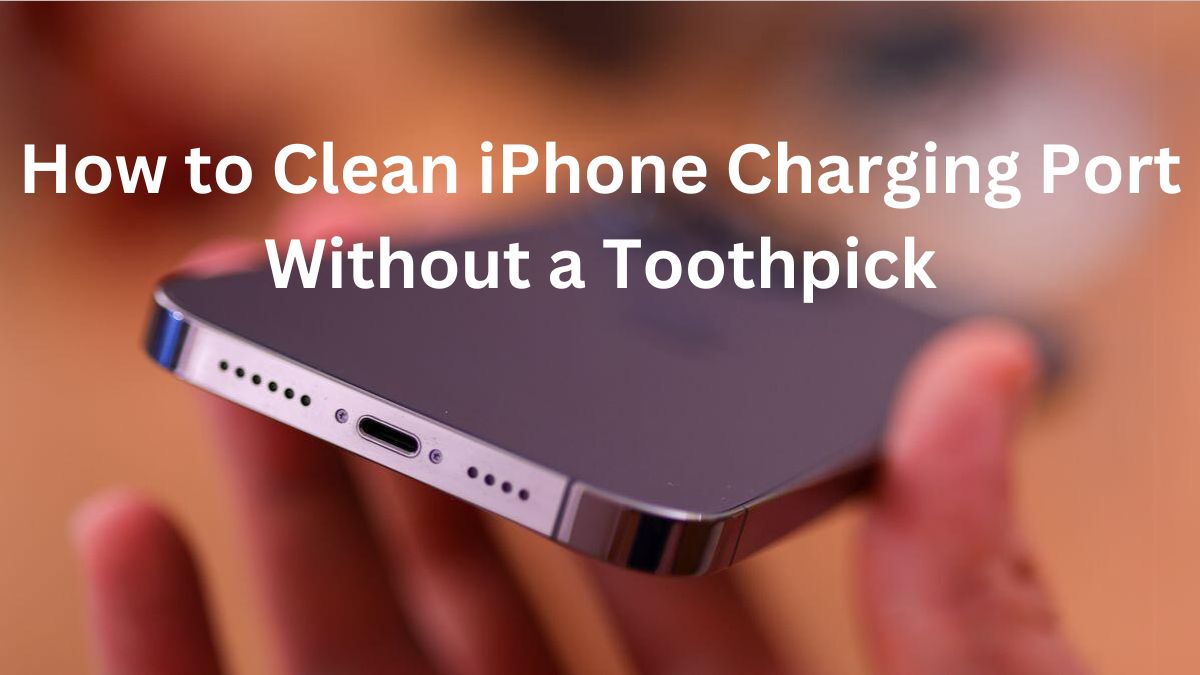Keeping your iPhone charging port clean is essential to ensure proper charging and connectivity. Over time, dust, lint, and debris can accumulate inside the port, preventing your charging cable from making a solid connection.
If you don’t have a toothpick handy or you don’t want to use it to clean your iPhone’s charging port, there are a few alternative methods you can try.
Plus, with the iPhone 15, it would be risky to use a toothpick or any metal stick to clean the charging port.
Why Keep the Charging Port Clean
A dirty charging port can cause a number of issues including:
- Slow or intermittent charging
- Connectivity problems with accessories
- Damage to the port itself over time
Regular cleaning helps:
- Allow full contact between the charger and port for proper charging
- Prevent charger damage from debris causing friction
- Extend longevity by preventing buildup and corrosion
What You’ll Need
- Soft-bristle toothbrush
- Compressed air
- Flashlight
- Dry microfiber cloth
Note: Avoid using anything sharp or metallic which could scratch the port. Also don’t use liquids which could seep into the phone’s interior.
Read: How to Rename Apps on iPhone
1. Power Off The iPhone
The first step is to turn your iPhone completely off before cleaning the charging port. This prevents any shorts or system glitches during the process.
Press and hold the side or top button until the “slide to power off” prompt appears. Slide your finger to turn the phone completely off.
2. Inspect the Charging Port
Use a flashlight to look directly into the charging port. Check the inner walls for any visible debris, dust, lint or grime buildup. Pay attention to the corners where particles often gather.
3. Use A Soft-Bristle Toothbrush
A soft-bristle toothbrush is perfect for cleaning iPhone ports. Gently insert the toothbrush into the port and carefully brush around the inner walls in a circular motion. This will loosen and sweep out any debris. You can this method to clean iPhone 15, iPhone 15 Pro, and iPhone 15 Pro Max charging port as well.
Be very gentle not to apply too much pressure or scrape too hard. Avoid touching the connectors and anchor points along the sides.
4. Try Compressed Air
You can also use short bursts of compressed air to help dislodge stubborn particles. Simply hold the can upright about an inch from the port opening and spray for 1-2 seconds.
Repeat this process a few times to ensure any loosened debris gets flushed out. Avoid tilting the can or inserting the nozzle as liquid could spray into the port.
5. Remove Final Debris
Use a dry microfiber cloth to wipe away any remaining dust or particles from the outer rim and edges of the charging port. Check the inner port once more with a flashlight to spot any last remnants of dirt.
6. Let the Port Dry
Before turning your iPhone back on, allow the charging port to dry for 5-10 minutes after cleaning. Any moisture should fully evaporate, preventing potential damage when powering on.
7. Reconnect and Test
With the cleaning process complete, turn your iPhone back on and plug in your charging cable. If it connects properly and charges without issue, you have successfully cleaned the port without a toothpick!
When To Seek Professional Help
If you still can’t get your device to charge properly after a thorough DIY cleaning, the issue could be caused by something beyond simple dust and debris. It’s best to take your iPhone to an Apple Store or authorized service provider for inspection. Damaged connectors or corrosion may require component-level repair.
Check: What is the Best Ad Blocker for iPhone
How to Prevent Charging Port Dirt Buildup in iPhone
To keep your iPhone’s charging port clean long-term:
- Visually check the port before plugging in your charger
- Keep your phone case clean and debris-free
- Store charging cables properly when not in use
- Avoid exposing your device to excessive dust or lint
- Use a phone case that has anti dust port plug
Implementing preventative measures helps minimize dirt exposure. But periodic cleaning every few months is still essential for optimal performance and longevity.






